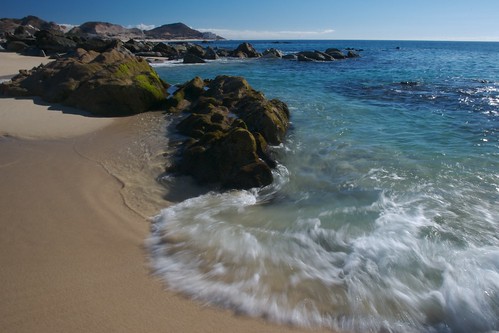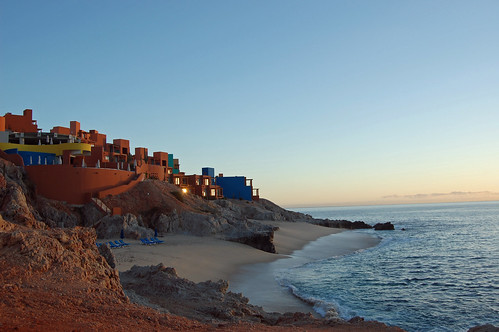Geography and Climate
Mexico is a very large country spreading southeast from its northern border with the United States to the Caribbean Sea and from the Pacific Ocean on the west and south to the Gulf of Mexico on the east. Mexico covers almost 2 million square kilometers (460,000 sq. mi.) and also shares borders with Guatemala and Belize.
In the northwest portion of the country is the Baja Peninsula. At 800 miles long it is one of the longest peninsulas in the world. The peninsula is also very narrow averaging less than 70 miles in width with the narrowest part being 26 miles wide.
20 million years ago, there was no Baja Peninsula. The land was originally connected to the Mexican mainland with the tip of Baja located near Puerto Vallarta. Thanks to the San Andreas Fault and the movement of the earth’s plates Baja is now is nearly 300 miles away from its old neighbor.
Baja's mountains form a largely unbroken barrier running the entire length. The mountains are actually a series of ranges each with their own name. The mountains average between 2,000 and 3,000 feet. The tallest mountains on the peninsula are the twin peaks of Picacho del Diablo, or Devil's Peak, which rise to 10,154 feet.
There are four main desert areas on the peninsula. These are the San Felipe Desert, the Central Coast Desert, the Vizcaíno Desert and the Magdalena Plain Desert.
Being a peninsula, two of Baja three sides are water. The Pacific coast is characterized by ocean swells and the occasionally heavy surf. Due to upwelling of deep ocean water, the water temperature is cool though it warms as the water mover south.
The Sea of Cortez is over 600 miles long and in places, the depth reaches more than 14,000 feet. With its location along the San Andreas Fault, the Cortez is very seismically active. Earthquakes in the 1800's destroyed the towns of San Ignacio and Loreto.
Due to its long narrow shape, the Cortez produces one of the largest tidal ranges in the world. Near the Colorado River Delta the tides can fluctuate up to 31 feet between high and low tides. Water temperature can also vary by large extremes. Depending on the season and the location, the temperature can vary from a high of 91°F to a low of 47°F.
Climate
Much of northern Baja California has a climate similar to Southern California. Along the Pacific coast the summers are warm with cool night, while the winter is cool with chilly nights. The Sea of Cortez has hot summers days and humid nights, while the winter is cooler with strong cold winds. Most of the rain falls along the Pacific coast in the winter, with an average of 10 inches of rainfall a year.
The southern half of Baja is more sub-tropical. Summers are hot and humid, while winter evenings can be cool. Rain is rare and mostly in the summer in the form of violent storms.
What is the weather like in Baja California today? Follow these links to The Weather Underground for La Paz, Loreto, Cabo San Lucas or Tijuana. Or check out this satellite map from Weather.com or from Earthwatch.com.
Try converting the temperature in your town from Fahrenheit to Celsius.
What time is it in Baja California as compared to the time in your home town? Check this!








